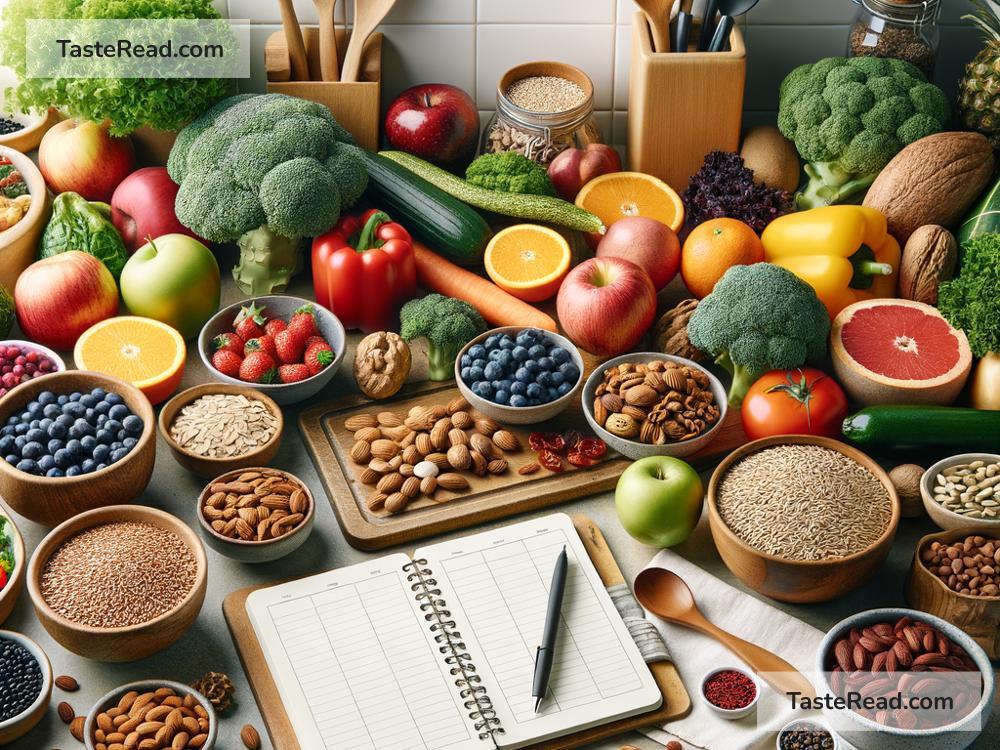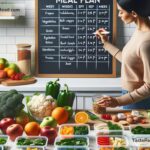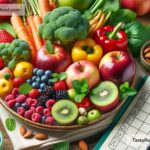How to Plan Meals for Optimal Fiber Intake
Fiber is an essential part of a healthy diet. It keeps your digestive system running smoothly, helps manage blood sugar levels, and lowers the risk of heart disease. Plus, eating more fiber can keep you feeling full longer, which is great if you’re trying to stay energized or avoid overeating.
Many people don’t eat enough fiber. In fact, the average daily fiber intake is lower than the recommended amount of 25-30 grams per day. But don’t worry — you can easily increase your fiber intake by planning your meals the right way! Here’s how you can make fiber an important part of your diet without overcomplicating things.
Step 1: Understand What Fiber Is
Fiber is found in plant-based foods like fruits, vegetables, whole grains, legumes, nuts, and seeds. Unlike other nutrients, your body doesn’t break down fiber for fuel. Instead, fiber passes through your system, doing important jobs along the way.
There are two types of fiber:
1. Soluble Fiber: Dissolves in water and helps lower cholesterol and stabilize blood sugar. Found in foods like oats, beans, apples, and citrus fruits.
2. Insoluble Fiber: Doesn’t dissolve in water and helps keep you regular by adding bulk to your stool. Found in foods like whole grains, nuts, and vegetables.
Both types are important for your health, so your meal plan should include a variety of fiber-rich foods.
Step 2: Start with Fiber-Rich Breakfasts
Breakfast is the perfect time to add fiber to your day. Skip highly processed cereals or white bread, which are often low in fiber, and opt for whole, natural ingredients.
Here are a few ideas:
– Oatmeal: Make it with rolled oats or steel-cut oats, not the instant kind. Add toppings like chia seeds, fresh berries, and a handful of chopped nuts.
– Whole Grain Toast: Spread on avocado or almond butter for added nutrition.
– Smoothie Bowl: Blend spinach, frozen berries, and a banana; top with flaxseeds or granola made from whole grains.
A fiber-filled breakfast gives you energy and sets the tone for a healthy day.
Step 3: Prioritize Whole Grains
Whole grains are an excellent source of fiber, so include them in your meals wherever possible. Unlike refined grains, which lose their fiber during processing, whole grains keep all their nutrients intact.
Swap these foods into your day:
– Choose brown rice, quinoa, or farro instead of white rice.
– Use whole wheat pasta or spiralized vegetables instead of regular pasta.
– Make sandwiches with whole grain bread instead of white bread.
If you’re unsure whether something is a whole grain, read the packaging. Look for labels like “100% whole grain” or check the ingredients list for items like “whole wheat” or “oats.”
Step 4: Fill Half Your Plate with Vegetables
Vegetables are a top source of dietary fiber, so aim to fill half your plate with them at every meal. Pick crunchy, colorful veggies that taste great raw or roasted, like carrots, broccoli, or bell peppers.
Here are some tips to add more veggies:
– Include a side salad at lunch or dinner with spinach, cucumbers, and shredded carrots.
– Make veggie-packed stir-fries using high-fiber ingredients like snap peas, cauliflower, and bok choy.
– Roast veggies like Brussels sprouts, sweet potatoes, and zucchini for a flavorful side dish.
Experiment with different methods of cooking to make your vegetables exciting and delicious.
Step 5: Snack Smarter
Snacking can make or break your fiber intake for the day. Instead of chips, candy, or other processed snacks, go for high-fiber options.
Healthy fiber-filled snack ideas:
– Munch on fresh fruits like apples, pears, or oranges.
– Trail mix with a mix of nuts and seeds, like almonds and sunflower seeds, can keep you satisfied.
– Try air-popped popcorn, which is a surprising source of fiber.
Keeping healthy snacks on hand ensures you don’t reach for less nutritious options.
Step 6: Add Legumes and Beans to Your Meals
Legumes — like lentils, chickpeas, black beans, and kidney beans — are fiber powerhouses. They’re also rich in protein, making them a great addition to both vegetarian and non-vegetarian diets.
Here’s how you can use them:
– Make a big pot of bean chili or lentil soup.
– Add black beans to tacos, quesadillas, or burrito bowls.
– Toss chickpeas into salads or roast them for a crunchy snack.
Experiment with different types of legumes to keep meals interesting.
Step 7: Drink Plenty of Water
Fiber needs water to do its job well. If you aren’t drinking enough water, a high-fiber diet may leave you feeling bloated or constipated. Aim to drink at least 8 cups of water daily, and even more if you’re active.
Step 8: Plan Ahead
Busy schedules can make it hard to eat enough fiber, so meal planning is key. On weekends or evenings, take some time to prepare high-fiber meals and snacks for the week. Cook big batches of soup, chop veggies, or portion out raisins, almonds, or popcorn as go-to snacks.
Final Thoughts
Eating more fiber doesn’t have to be complicated. With a little thought and preparation, you can easily plan meals for optimal fiber intake. Focus on whole, natural foods like fruits, veggies, legumes, nuts, seeds, and whole grains. Drink plenty of water, snack smarter, and stay consistent — you’ll feel great and give your body the nutrients it needs to thrive.
By making fiber a priority, you’re not just improving digestion. You’re building a health-focused lifestyle that supports long-term well-being. Happy eating!


